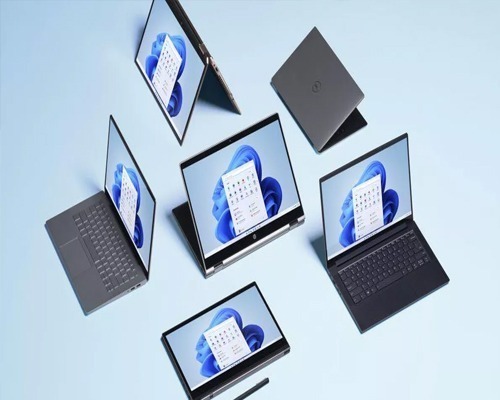
Windows 11, Microsoft’s newest operating system, has some significant improvements over Windows 10. The new OS has a revised UI with a more Mac-like style. Some important new features (such as simpler virtual desktop creation, widgets, Android app downloads, and a more integrated Microsoft Teams experience). But it falls short in terms of performance and productivity features. Some features that we wanted to see did not materialize.
Before we begin, here’s how to acquire Windows 11 if you haven’t already. And, while we are upset by some of the missing features, Windows 11 has a lot to offer. Also, find out if your device is compatible with Windows 11 and what to do if you don’t want to give up Windows 10 just yet.
A vertical taskbar option on Windows 11
While you can move the taskbar in Windows 10 to a vertical position to the left or right edge of the screen, the resulting user experience is frequently clumsy. We were hoped that this would still be an option in Windows 11, albeit slightly cleaned up. However, it looks like Microsoft has abandoned the feature, and you will have to retain the taskbar at the bottom of the screen.
Windows 11 Webcam computational videography
With so many individuals moving to remote or hybrid jobs, having a good webcam experience is critical for all those Zoom and Teams sessions. Computational image processing is already included in the iPhone and latest Google Pixel phones to increase image quality. We had hoped to see this capability for cameras in Windows 11, which would have given PCs an advantage over M1 Macs, but no such luck.
Faster Windows updates
Windows 10 was Microsoft’s first attempt to provide Windows as a service, complete with automatic upgrades, which is ideal for keeping PCs safe. These changes, however, can be sluggish. We’d want to see a more similar approach in Windows 11 to Google’s Chrome OS. The site where the upgrade happens in a second partition and the background. However, it appears that upgrading to Windows 11 when it becomes available would be the same as it was for Windows 10.
Faster shutdown, restart and wake from sleep
Slower shutdown, restart, and wake-from-sleep times for Windows 10 PCs may be caused by the requirement to close apps such as the task manager. We’d like to see those options speeded up in Windows 11, but Microsoft made no mention of any improvements.
Drag and drop with three fingers on the trackpad:
MacOS allows you to drag and drop things with three fingers on the trackpad. However, Windows PCs now need you to double-click to do this. Again, Microsoft made no mention of any changes.
Simpler methods for reversing the scroll direction:
If you wish to, you can easily reverse the direction of your mouse scroll in System Preferences. However, with Windows 10, you must enter the Registry, which is a more involved procedure.
User account creation is now easier on Windows 11:
To establish a new user account in Windows 10, you must first log in, and Microsoft advises that the new account be linked to a Microsoft account. While we anticipated speedier user account creation without having to check-in or join a Microsoft account. Windows 11 Home takes the other approach: you’ll need a Microsoft account and an internet connection to install the upgrade.
The configuration of different cameras, webcams, microphones, and headsets has been improved:
With the rise of work-from-home opportunities, more people are outfitting their computers with a plethora of cameras, microphones, and headphones. However, Windows 10 makes it tough to pick the device you want to use. It requires you to deactivate one of the others on occasion. While Windows 11 has some useful features for hybrid offices. It includes faster desktop creation, Microsoft officials did not reveal any modifications in hardware requirements.
